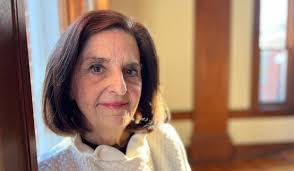In 2004, Guilford College committed to embracing multiple cultures and fighting off racism. In 2009, the Diversity Plan was approved.
Since then, Guilford has taken great measures to stand as an inclusive community that creates a welcoming and rich environment for the disabled and for cultural minorities.
“All members of our community will feel welcome and empowered,” the Diversity Plan vision statement reads.
But do they?
On Oct. 23, the Diversity Action Committee held an open forum to discuss how it can improve the diversity and life for minority and disabled students on campus. Including DAC members, the forum had only 10 attendees.
“We’re trying to make this big issue more comfortable for folks, to feel like they can talk about it and that’s something that we’re still challenged by,” said Barbara Lawrence, DAC member and assistant professor of justice and policy studies.
The meeting focused on assessing the community’s awareness and reactions to Guilford’s current state of inclusiveness.
“We are going to obtain one assessment tool, Diverse Learning Environments, for sophomores and juniors,” said Lawrence. “Most of the nationwide surveys we give are for juniors and seniors. Rarely do we capture what happens in the middle; so it’s very exciting.”
The committee feels that this will be a major break in how to improve life for everyone at Guilford.
“This is exciting, because this is a way in which we are making real progress,” said Assistant Academic Dean Erin Dell. “We’ve been working on trying to develop a set of diversity indicators … that we will standardize throughout the institution. We are moving in the direction of creating very concrete assessment tools that will give us very clear information about what’s happening and about what we need to do.”
Coordinator of Housing Operations Maria Hayden expressed the need for better prioritizing of diversity.
“I don’t think as a whole institution, from the top down, in each department, it is being prioritized well to feel like, if you see something, … you can talk to your supervisor about, ‘How can we fix this? How can we address this?’” said Hayden. “Budgets and numbers and these other things seem to take more precedence.”
The committee holds substantive equality in high precedence. Taking a step beyond equality, to not only allow everyone the same resources, but to allow everyone the same opportunity, taking any disabilities to heart.
“We are compliant with the (Americans with Disabilities Act) law by having stalls in the bathroom that are big enough for someone with a wheelchair to come in,” said Jorge Zeballos, director of diversity training and development. “But the law doesn’t necessarily say that you have to have a button on the outside of the door for that person to be able to get in.”
It’s never too late for community members to give suggestions about any upcoming initiatives the DAC plans to undertake.
“Membership in the subcommittee is open to anybody in the community,” Zeballos said. “You don’t have to be a member of the DAC to participate in subcommittee work.
“Actually, having broader participation in the subcommittee helps us broaden the feedback loop that we can create. If you’re interested in any of these areas, let us know.”






